© 2016 by James Clark
I think it’s a big mistake to suppose that the film title, Alien (1979), pertains solely with regard to the ugly killer of most of the crew of a spaceship. To opt for that simplism is to underestimate the sensibility of helmsman, Ridley Scott. Not that seeing Scott at his best is an easy task, however. Fortunately, he sprays about quite a lot of trailblazing self-characterization—often wildly self-contradictory—ample enough to allow those of us, who have been assured that he’s got the right stuff, to wade past a façade of “professionalism” which brazens out an homage to all the journeymen involved in cash-flow (and nothing much else), on the order of The Martian (2015). Scott generously shares with us not only his life-long commitment to design craft but also his recognition that such a field is very crowded with brilliant practitioners, necessitating relentless and ruthless competitive assertions—assertions (he hearkening to his ongoing TV ad work as in the spirit of Mad Men) not above outrageous bullshit. One of his unforgettable remarks is, “I try to hit the truth.” Another of his unforgettable remarks is that, whereas when he began his film career (Alien being near the beginning) there was a 50/50 confrontation between the watchable and the unwatchable, now it’s down to watchable 3%. (Can you imagine he’d include The Martian in the league of 3%?) A third declaration of importance to us here is, “I’m more intrigued by human relations” [than typical suspense yarns].
Getting back to the good old days of 50/50, after a long winning streak of unprecedented, dazzling Super Bowl commercials (the pilot of the craft in Alien being outfitted with that magic NFL word, Dallas; Dallas also being an assassination site) and the like, our guide was brought aboard a vehicle stemming from screenwriter, Dan O’Bannon and Surrealist painter, H.R. Giger, who met during the abortive Alejandro Jodorovsky run-up to the sci-fi property, Dune. Among those considered for directorial duties for Alien was Robert Aldrich who, with screenwriter, A.I. Bezzerides, had briefly, during the output of Kiss Me Deadly, showed a penchant for “human relations” (or was the real work there that of Bezzerides?). But, elbows in play no doubt, it was Scott who convinced everyone who mattered that he could do the job, a job considerably more complex than giving customers a good scare.
Being dissuaded from an army career by his military father and encouraged by that source to pursue the arts, Scott would evolve toward startling graphic, industrial and cinematic design carrying a sense of life being essentially about variants of conflict. Alien bursts across the screen as both disconcertingly and gloriously abysmal, a stream of action where smiles are not abundant and boredom gets run out of town. Although what is to come is white-knuckle intensity, the saga begins by taking us out of our shells and feeling the sensation of endless space and its quizzical details. Against a pitch black backdrop there are the stars of course, and, less familiar, rings of soft golden light in the vicinity of a planet, standing out in its dark-side blackness as the camera drifts by. Along with this austere cornucopia, faint, sustained clicking and bubbling washes of sound come into effect as far from sounds we ever hear in getting on with our lives. Then we undergo both further disorientation—as soaring silently and gracefully alongside a sooty grey monstrosity of structural fabric articulated by severe panels linked in holding forth as an almost unimaginable space craft—and at the same time industrial déjà vu in its being branded to read Commercial Towing Vehicle Nostromo. We’re next amidst the interior of this barge with beauty and our eyes take in the almost art deco streamlines and muted palette of the corridors and centres with their electronic communications and navigational systems. The pervasive silence and stillness here is disturbed only by the stirring of pages of a few (surprisingly paper) books having been left on tables. Several space helmets are arranged by a wall (giving off the tone of a sports gear shop) and we increasingly wonder how such a behemoth can move along with no one at the controls. The attenuated lighting, hitherto, shifts to bright just as we arrive at a room where the crew is coming out of a type of hibernation, once again leaving us out at sea.
Uncanniness had been holding its own until now; but, at breakfast, with hand jives from two of the men (the two in the room jaggedly proletarian-looking, in contrast to the smoother college grad looks of the others) and their expert razzing of the two women of the seven-person complement, giving way to a summons to Warrant Officer Ripley, one of those women, and Dallas, the Captain, to come to a station where a system, named Mother, would divulge the meaning of this interrupted unconsciousness, we are back in Kansas, optics notwithstanding. Importunate (would it be unfair to call her busy-body or exploitative?) Mother has, though, a taste for the bizarre—going so far as always on the lookout for extraterrestrial life, on the chance of which the towers of millions of tons of ore from an indeterminate outer planet of our own solar system would become bring-them-back-alive soldiers of fortune. Right here we are tested to notice not only the diceyness of this clause in the crew’s contract being activated but the predatory motive being disregarded as hostile. Couching the more than rare event in a pretense not to know if a “signal” picked up by always-on-the-job Mother means SOS or a warning to stay away, the powers that be, back at the mineral supplement plant, order a reconnoitre of the asteroid beaming those vibes both new and old. And as the crew swings into action, we are first of all struck by, with the exception of the two sexist Engine Room boys, how untroubled they are to be taking a flyer on sentient entities who may not be nearly as sanguine about homespun Kansas as they are. In Stanley Kubrick’s Space Odyssey (1968), there was a series of apparitions inviting earthlings to make beautiful music together with them. Though those encounters were not wildly successful, the pacesetters did somewhat smile on a pack of monkeys and a kickass space jockey. Our contestants here, however, are not in for a fairly easy-going species with unusual consciousness taking a very long view toward the prospect of satisfactory harmonics. What our quasi-truckers (but also pumped sky chiefs) have stumbled upon is a species reflexively regarding all divergences from themselves as needing to be killed as cruelly and yet rapidly as can be accomplished by powerful carnality. When all is said and done, it is not the shock and gore around the corner here which matters most, but rather that monstrousness of power (an essentially creative power, however volatile) and its consequentiality for the wider work load of the earthlings seeking rightness at various levels of self-possession.
Ripley is not among the three-person task-force sniffing out the hopefully wonderful news. But even at this early point her alert poise relates that a more expansive story is also lurking around the corner. The crude cruising zone of the rude mechanicals in the outfit (Parker, the Chief Engineer, a black homeboy; and Brett, Engineering Technician and trashy wiseacre), mired in pronouncements and anxieties about their payment totals) serves to spotlight her astronomical distance from such energies. With the search party on its way, burly Parker stares hard at her and declares, “I’m not going to do any more work until I get this [his supposed bonus] settled.” She tells him, “Why don’t you fuck off!” The other man left back at the craft, namely, Ash, Science Officer, had earlier explained that the mutiny being contemplated involves “forfeiture of share.” The story which Mother unhelpfully strings out leaves Ripley and her latent believe-it-or-not energies in command at the shuttle having brought the crew down to the mini-planet while leaving the mini-megalopolis in a safe orbit. This stand-pat moment soon turns into a protracted test for her (and everyone else involved), the atmospheric run-up to which being far more germane than merely setting the stage for Grand Guignol. Even before the safari takes a step, a rough landing by the shuttle shakes the variously distracted denizens of deep space into a blurring state of flux as melded into the lurching machinery and convulsive light. The shrieking noise of the faltering finale increases the sense of universality of an obliteration which could come in several ways, alerting countering steps. Under way, the three trekkers—after the seemingly puzzling washout of Science Officer Ash, looking a bit queasy and reminding us of cowardly Hal in Space Odyssey—are buffeted by strong winds and tripped up by the unpropitious slag heaps defining this surface of interest and further impeded by the murky light. As Dallas, along with Executive Officer Kane and Navigator Veronica, struggle in bulky protective suits and transparent head-covering, the musical score filling the air is both stressfully piercing and claustrophobically, rhapsodically melancholy (the gear allowing them to maintain radio contact but the varied pace inducing isolation). As they arrive at a whale-proportioned wrecked spacecraft, covered as everything is in ash-like debris, its two massive, tusk-like exoskeletons grab our attention. Then it’s the huge elephantine corpse in the pilot’s seat which adds its weight to the threat of delirium. Dallas remarks, “It’s been dead a long time…It seems to have exploded from inside.” Veronica, who, when first seen at breakfast whined, “I am cold…” [and then heard from Parker, “You could use Brett…” who in turn winked], and might have been Ash’s replacement, blurts, “Let’ get the hell out of here!” But Kane, who is having a ball with all this, sees a way to rope down to a lower deck and sees nothing but big news ahead. He reports to Dallas—back in the pocket, while he’s headed for a spectacular touchdown catch—the only one on the site who shares his excitement, “There’s a lake full of eggs or something…” There’s also, on dry land awash in blue light, a colony of vertical pods, one of which he approaches, seeing its top open to expose a wet purse; and then finding, in a flash, that a sort of octopus has sprung to cover his headgear (a bizarre touchdown catch) and to rope its tentacles around his neck—the initial stage of a harrowing series of executions calling for reservoirs of sangfroid over and above researching zeal.
The piece of work that is Mother (part hellish Hal and part angelically catastrophic Dr. Heywood R. Floyd [the Fred Astaire sylph not playing with a full deck] in Space Odyssey) has, if nothing else, inadvertently given the troops a chance to make drastic progress, and none of them goes as far as Ripley. Right off the top here she’s faced with the now-less-than-thrilled expedition at the small craft’s locked door. (This would be another take on Space Odyssey, where Hal is far off the mark. Ripley’s being coated like this, apropos of amazing graces, takes precedence over the surface of a nasty crash in the making.) Understandably the returnees are eager to be allowed back in, but Ripley, bowing to stiff rules and regulations instead of effective instincts, invokes the arcane law of a 24-hour quarantine on the occasion of an alien in the works. (At this insinuation of the powers of “human relations” in cinema, it seems appropriate to engage for a bit a very different angle on this matter, occasioned by the presence of actor, John Hurt, in the role of Kane. Five years before the release of our present film, he played the part of a cheerless groom and ruthless son of an oligarch being stricken by the Plague [a problem of atoms, not attitude] in Jacques Demy’s The Pied Piper. His wedding reception was striking for having many ravenous rats crawling out of the wedding cake.) Even before this sign of a procedural landmine, however, there have been hints that Ripley has been outfitted with quite a nice little antidotal blitheness (actress Sigourney Weaver being an Audrey Hepburn-style spare and coordinated). Just before the big-game-hunter team leaves we see in close-up (while barely noticeable until then) a ginger cat. Would this pan be a tincture of Holly Golightly and her “such a lot of world to see”? Even with Kane looking as if he had a version of the Plague, the other two are, though somewhat disconcerted (especially Veronica) far from shattered. Could they be, at some level, “two drifters off to see the world”? And if this is it, isn’t it at any rate an interesting way to go? Normal horror films count upon victims pretty shook up about dying. What have we here? Ripley (like Holly?) allows the folks at the door to come right in, after a feeble recital of the safe-way law—seemingly as porous as a curfew law—which Ash, showing no concern for protocol or widespread death, overrides, he being a Science Officer very keen about having a close look as long as he doesn’t have to bust his ass.
Kane is examined by Ash and Dallas and found to be infused by the assailant’s tentacles; and during a deliberation the emotional pitch of the still-healthy crew is one of sober concern, but no more than that likely for a heart attack incident, where here the flagrant badass they’ve brought aboard overtly threatens them as much as it does Kane. Having left their suffering mate on an operating table, they discover that the appendage has disappeared and that Kane is quite chipper and eager for a meal, during which he suddenly coughs, his gut explosively rips apart several times and from out of the mess there emerges—no longer the many-armed slimy barnacle but—a piranha-faced red shaft having emerged from a vagina-like orifice. It emits shrieks, eyeing everyone in the room with murderous hatred as it scampers into the skyscraper-craft’s many bulkheads. During Kane’s bloody convulsions, one of the engineers (Parker) who had appeared to be nothing but a jerk assists with holding Kane in his death throes; and while he’d seemed to be a candidate for freaking out at far less than this he finds a reservoir of self-control.
There is a meeting and two teams are formed to find, face and dispose of the nightmare-side of extraterrestrial life. Only Navigator Veronica shows as much fear about this as we do. With all the accounts of this true film classic insisting, validly, upon its dark and frighteningly violent intensity, what goes unnoticed is that the audience is in far worse shape than the players caught up in its meat grinder. Whereas in The Martian space life leaves the aviators determined to stay tiny, in Alien space life brings about human magnitudes which tend to get ignored in favor of what has the trappings of a peculiar bull fight. Much praise has come to Scott for coordinating a scenario of nearly unbearable suspense and shock. As far as I know, no credit has come to him for weaving a remarkable fabric of those “human relations” he was not kidding about. Of course the Academy awarded a prize for technical effects. But they missed the opportunity to first of all nominate and then award it Best Picture. The horrible denouement of this hitch-hiker flick rolls on remarkably in conjunction with striking revelation of modernists reaching frontiers of sensibility, which is to say, enjoying as far as they can their slight but progressing mastery over resentment and mastery over fear.
Ash, during the twisting ordeal of the first mutual contact with an alien, takes a sample of the rock-candy grip which the smallish monstrosity has imposed upon Kane’s face. Immediately, liquid pours from that amputation, quickly eating a hole in the operating room’s floor and in fact seeping down through several levels below. The crew rushes to a hopefully unaffected area of the huge edifice; the teams are set; Parker alerts Dallas to keep away from the liquid scourge dripping into their retreat; Brett distinguishes himself by fashioning a sort of fiery cattle prod to flush out the very unusual killer; Team One (Parker, Brett and Ripley) think to be blocking out the area—in the vicinity of the semi-darkness of the Engine Complex—where the little snapper seems to be; Ripley carries a device to detect vibrations caused by motion, and she’s sure the prey/predator is very close; pressing close to an opening, they discover, quite hysterically, that Jones, her cat, has touched off the false alarm; they laugh off their fright; Parker’s being equipped with a large net in conjunction with Brett’s spear-like device casts the two salts of the earth as gladiators pitched against a very small cat and a very big one; Parker declares, “He had the track, man…Now he might pick it up again…[to subordinate Brett] Go get it…”; Ripley is stung by this, but recovers: “OK, you get him, we’ll go on…”; Brett’s being nominated to round up, “Here, Jonesy,” coming to light as including his being very fond of the little beast and his seductive thrum, nevertheless Jonesy watches wide-eyed as Brett is devoured by an enemy no longer a land-locked little fish but a gigantic unearthly wolverine with countless big, sharp teeth in its wide mouth; along a closed-up bulkhead/tunnel, Dallas uses his flamethrower/spear aspect to presumably frighten the primitive beast; he’s tracked by Ripley from a screen showing moving entities as dots (a very rough approximation of sentience, and perhaps anticipating serious trouble in the area of dealing with malignancy); a second dot moves toward that representing a Dallas still seeing nothing and his screams indicate ruinous contact leaving Ripley to lead; reaching that latter point of contact, Parker remarks, “No blood. No Dallas. Nothing”; Ripley moves on by disregarding Veronica’s plea to abandon ship and instead continuing to comb the air shafts and explode it out along that opening; she confronts a weirdly unresponsive Ash about pulling his weight, gets beaten up by that surprisingly athletic stiff until Parker arrives to beat his head so forcefully that it tears away, revealing the “Science Officer” to be a robot programmed to drop everything if another form of life comes into view (this crudely sensational sense of discernment being a means of highlighting the compelling range of life already in play amidst the human crew and its special exigency of going to war against lethal perversity).
Ripley’s combative perception being thus sharpened, she sees the light in trashing the big sky-truck and heading for home in the rover (her sense of a home presided over by the likes of Mother undergoing a process of strange transformation formally, but not substantively, akin to the changeable ways of the killer). With the countdown to setting the night on fire well underway, Parker and Veronica, forming a pile of the munitions (to burn) always a part of the tripping, prove to be at the wrong place at the wrong time, leaving them looking like an unkempt butcher shop; but with the proviso that Parker sacrifices his chance to do battle due to his not wanting to shoot Veronica who is petrified and in the way.
Along this saga-line of variable right stuff, Ripley rounds up the cat (Holly intriguingly not giving it a name, the better to have it mysteriously in progress) and heads for the rover, so right for two drifters off to see [a bit more of] the world. At the point where the six survivors shoot Kane’s corpse into space, Dallas asks, “Any final words?” The answer is a resounding silence, which our protagonist, in particular (an imperfect but lively lover), fights to endow with some warmth and light. Ever the implacable enemy of sentience differing from its own (Ash’s rebooted head sneers to Ripley, “You still don’t understand what you’re dealing with—the perfect organism… I admire its purity…”), the too-big-for-the-rover shows up as a humanoid spoiler. Ripley spoils the spoiler by not losing it and flipping it into a space far more beautiful than the glutton of gore. She isn’t above roughing up the beautiful accomplishment by (erroneously, before the damn thing shows up there) bragging, “I got you, you son of a bitch!” But our tracking of her accomplished intent has to attend to the factor, so salient now, of meeting simplistic hostility with a severity a bit sharper than that of Holly Golightly. (Years after Scott’s enlisting that fetching, but Manhattan- hard, comedy, Breakfast at Tiffany’s, the Coens copiously appreciated it in turn, in their resentment-alert of a film, Inside Llewyn Davis.) The lizard-tail we see on its way out suggests the factor of absolute hellishness (compare with Hal; compare with Ash) facing her and us as she cobbles together a viable career that means so much to those wide open spaces.
Alien clads its dash of deadliness and love in a visual tonic which does not sparkle for everyone. The Nostromo [Our motion?!] is more than a breathtakingly huge form of motion, but rather a tour de force of industrial design rooted in graphic design and the history of avant-garde art. Seen from one angle the craft is an airborne super-tank with gun mounts bristling from every angle. (In the course of this narrative no one ever refers to its battle readiness; but the dominant subject of conflict is hard to miss.) As it first looms toward us in the murky pit of the outer solar system, the most prominent feature is what we later see clearly to be a cluster of about five transmission towers. But in the darkness of space (dark in many ways) the structure appears to us as a sculptural work of art by Auguste Rodin (1840-1917), titled, “The Burghers of Calais,” where six leaders of the besieged town of Calais (in 1347) are depicted in bronze subjecting themselves to an enemy who would execute them and thereby lift the siege. Rodin’s proto-modernist approach to carnality would have resonated to an auteur going for broke here, the film’s extensive violence and horror fully resolved to reach unique depths spawning a wide spectrum of possibilities. (Ash refers to the zone of the asteroid as “almost primordial.”) The interior of the spaceship is suffused with that angular geometry and subtle, austere palette leaving it firmly entrenched in the art deco era of ardent aspiration and rather melancholy constraint. The ruined craft on the asteroid is a quite startling, irregular organic goldmine of muscular twists and arabesques in the spirit of Art Nouveau as pulling along myriad revolutionary practices. Far removed from cosmetic ingratiation, this fabric of apparition looks to a long and honorable mining venture on the part of those who have endeavored to make an elusive sense and joy come into meaningful play in a world historical context of primitive, sterile aggression.
Rather than overplaying the nobility of a crew on board for cogent mystery, the saga solidly apprises us of the ordinariness of their procedures. The unsteady graciousness of Veronica, Parker, Brett and Ash is a more simple tale of being largely overtaken by unfixable defects of courage. But the film—setting in relief that humanity comes in various magnitudes and as such far surpasses the “perfect organism” running at absolute zero on the creative range of give and take (Kane running into the colony as a collection of inert isolationists on the order of the residents of the trash bins in Samuel Beckett’s play, Endgame [1957])—offers, with Kane, Dallas and Ripley, figures galvanized by the possibilities of discovery and significant transformation (transformation including being not only more insightful but more tough). Despite the ominous dead craft with its massive macabre corridors, plunging shafts and disconcerting silences affixed with clock-ticking, barely audible presences, Kane is the picture of a rapturously pleased researcher. Dallas, too, is intent on staying in that gold mine of the never-before-seen.
Ripley’s trajectory is not only the longest-lived but the most fascinatingly nuanced. Her zeal for the investigative aspects is never overt; and her moments of solitude in minding the store must be closely followed from the perspective of her willowy equilibrium as not easily brooking the madcap disruptiveness of Parker and Brett. With the strong whiff of death in the air, however, she readily forms a partnership with them, culminating in Parker’s saving her from Ash. During the would-be-trade-off as to Jones she ponies up her painful sacrifice into their painful sacrifice of the sadism they had gorged upon. During Brett’s last tour of the craft’s lower depths-engine complex, there is his fondness for Jones (more overt, if not more intense than that of seldom demonstrative Ripley); but there is also a coming to light of the corridor walls in their doubling as twentieth century minimalist sculpture, not his thing at all but, as a man on death row, eliciting transcending resources in the echo of Rodin’s Hundred Years’ War death row. Then there is a row of circular metallic panels along another wall, resembling the shields of ancient gladiators being fed to bigger and meaner cats than Jonesy. Just before the moment of truth, a Brett tightening up in the absence of his teammates comes to a place where a leak rains down upon him. He takes off his Good Old Boy cap and looks up to let the water splash on his face. He clearly benefits from this simple windfall, proceeding to drink some of the flow, his eyes closed. The new form of the killer, convulsively brandishing its fangs, takes us straight to late twentieth century painter, Francis Bacon, and his take on Velazquez’s Pope Innocent X. Thus again we are struck by the wealth of historical factors springing up, which could somewhat alleviate the situation of being a hopeless victim. Brett’s considerate and yet cynical approach to the cat—seemingly eliciting no hostile interest in the attacker (and in this being like the monkeys vis-a-vis the monolith in Space Odyssey)—is a rich tapestry of turbulent intent, playing, in sharp contrast, to the machine-like predator. (Soon after the interruption of the long sleep, Ripley and Veronica both feel the need to exclaim, on checking out the orientation to date, “That’s not our system!”)
Thus, with a rather ambiguous furry loved one in place for the trip “home”—now changed forever in her eyes (“wider than a mile” not beginning to measure the proportions)—Ripley, like Holly Golightly, who had moved from a carriage-trade jewel box of a bed after a long night, to breakfast at a diner, reports to Mother how many had died. Her recitation is far beyond resentment and far less than cordial. “I should reach the frontier in about six weeks… With a little luck the network will pick me up.” That may not sound like the onset of a triumphant new life. But it is the onset of widened horizons. The fireball obliteration of the mother craft which has been left behind creates an almost blinding light. (Does it, by any means, coincide with Dave’s facing, with heart, the very bright lights in the vicinity of Jupiter, in Space Odyssey?) As she struggles with that visitation, her visage resembles that of Joan of Arc reaching an abyss we all negotiate in various ways. Joan’s being another warrior of The Hundred Years’ War (the Burgher’s of Calais being at its outset; Joan being at its end) rounds out the historical allies salient here, which the seeming lone wolf actually basks in.





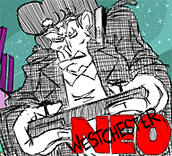



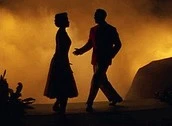
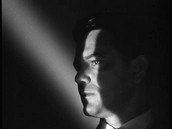

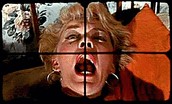










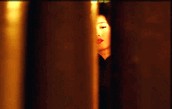

 Click on names for archives
Writers/Founders
Click on names for archives
Writers/Founders
This is an utterly profound examination of a classic science fiction/horror film that has unceasingly invited analysis and comparison since it first debuted. Just sizing it up with its follow-up (ALIENS) would unearth a massive discourse, but as you have shown in this assessment within the parameters of the genre, there is much to chew on. Certainly I must be counted as a huge fan. In the 1950’s, I was an impressionable television fan who considered IT THE TERROR BEYOND SPACE one of the most effective science fiction fans, and as most know ALIEN’s screenplay borrows heavily from the earlier film’s basic premise. Persuasive comparison there of Ashe and Hal. In any case you have succeeded din making me look at this masterwork from new angles, and certainly have wet my appetite for another viewing. Superlative piece here Jim!
Thanks very much, Sam.
Over the past little while I’ve come to regard Ridley Scott’s early work as, not only master craftsmanship but art of the highest order. Alien, Blade Runner (up next) and Thelma and Louise (up after that) are, to me, definitive film treasures, and moreover, powerful claimants as to consummate depths only to be aptly conveyed by cinema.
Scott’s sensualist cultivations ground a primordial saga of creative carnal consciousness with its welter of resentments and welter of chivalry. Doubly remarkable, then, is his welcoming the stories of others, only to turn them on their ear, making them far more profound than the inception. For instance, he enlists a lead-pipe feminist for the vehicle of Thelma and Louise, only to convey something light years beyond feminism.
This is a really fascinating piece on a film that has become a favorite of mine. There was a time when I considered anything by Ridley Scott to be beneath my notice. I still feel that way about a lot of his work but for a few of his films I now feel otherwise.
Thanks, Duane.
Scott rolled into feature film work from out of TV ads, a business where it doesn’t pay to have a strong commitment to the sublime. And yet, having amassed a fortune by way of visual genius and dramatic wit on the small screen, he navigated into full-scale filmic drama by having up his sleeve years of deep study concerning the wildest reaches of the history of art. Being used to the hit and miss world of corporate gold digging, he presents to us a rather bewildering crazy quilt of a career. Quite clearly his scope can digest second best (look at The Martian!). But when the stars align he’s really something else!